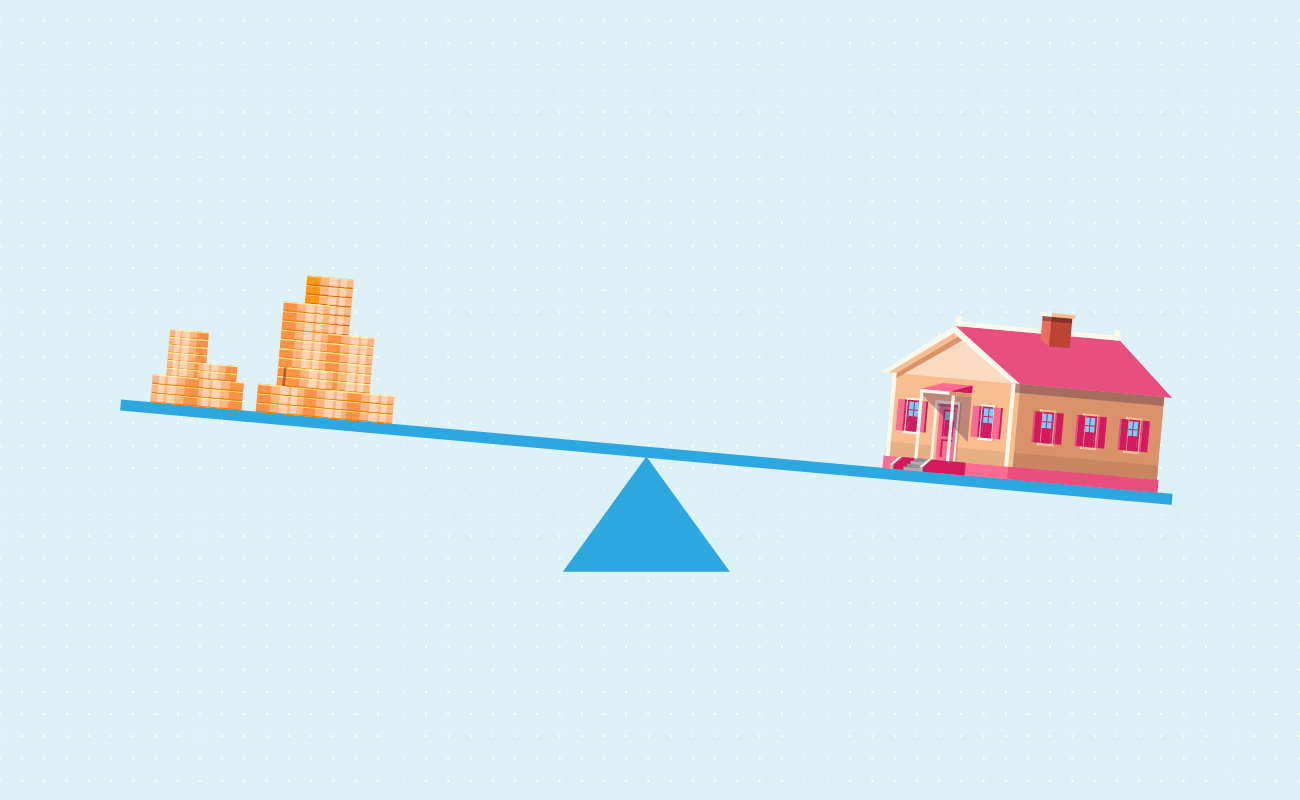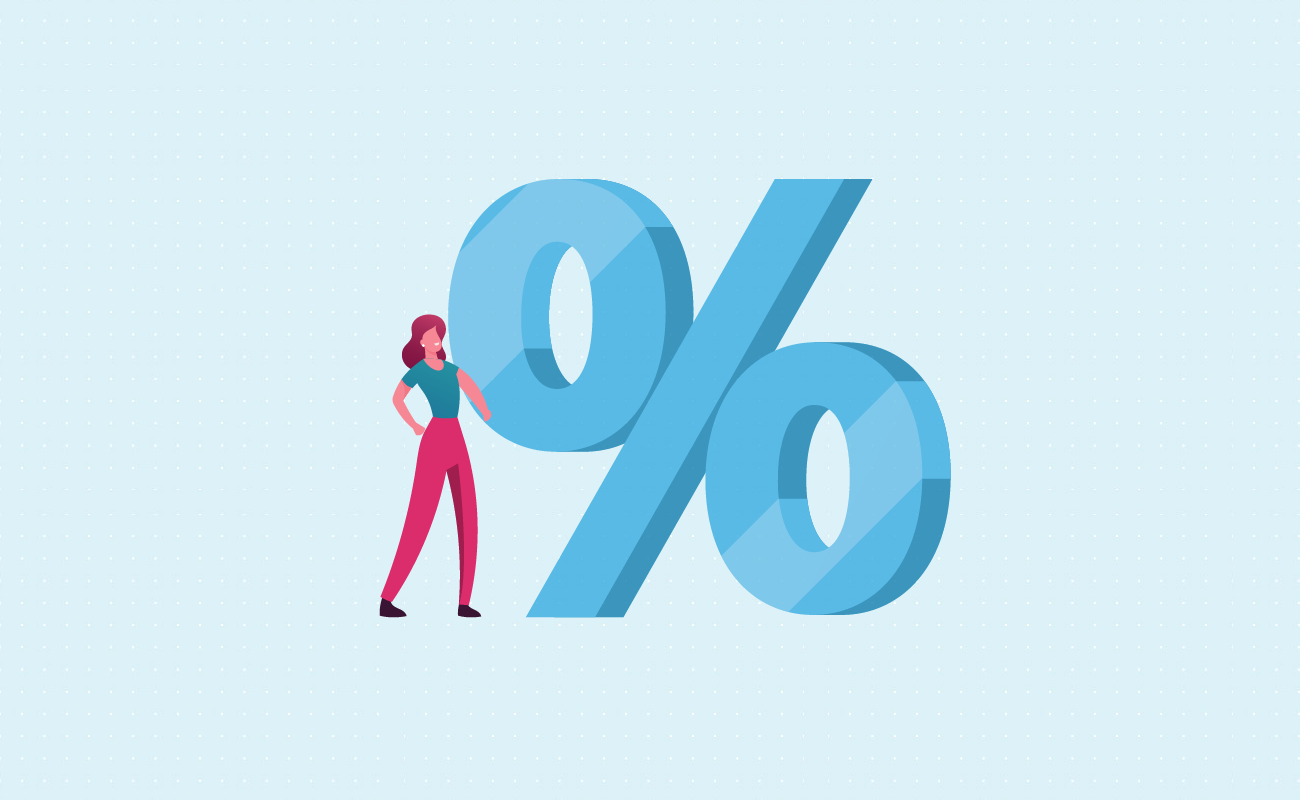Fixed Rates
30 yr
25 yr
20 yr
15 yr
10 yr
Compare Terms
Compare Rates
Real APR
Adjustable Rates
Qualification
Affordability
Renter Affordability
Rent vs Buy
Price per Square Foot
Jumbo
Home Sellers
 United Kingdom Mortgage Calculator
United Kingdom Mortgage CalculatorThis calculator that will help you to compare fixed rate and interest-only variable rate mortgages for the UK market. We also offer a US mortgage calculator and a Canadian mortgage calculator.
Authored by Jose Abuyuan on January 12, 2021

For centuries, the average Briton could not aspire for home ownership. Owning your own property was simply out of the question. It wasn’t until the 20th century that the common person could aspire for home ownership. Today, the upwardly mobile Brit has a plethora of options to finance even a modest home for their needs.
Home ownership in the United Kingdom, however, comes with its own set of challenges. This labyrinth can be a challenge for the aspiring home owner or foreign investor. Understanding the quirks of the U.K. housing market can help you find the right home for the right price.
For a long time, most Britons were usually tenants. Up until 1918, over 70 percent of Britain’s population lived in rental properties. A hundred years later, and the picture is different. Over 62 percent of Britons now live as owner-occupiers of their homes. Private renters made up the larger proportion of tenants at 20 percent. Residents of socialised housing hovered at 17 percent.
Much like a lot of things, the housing market in the United Kingdom evolved in splendid isolation. Thus, much of its inner workings differed radically from those in the rest of the English-speaking world. Unlike in North America, there isn’t a lot of land in Britain. Much of it had previously belonged to affluent families in the nobility or gentry. Big changes in the early to mid-20th century, however, created a market for private homes.
In September 2020, the average cost of a home in the United Kingdom was around £245,000, according to HM Land Registry. This marks an increase of 4.7 percent over the previous year. The following table compares the average house prices across the United Kingdom. The data presented is available from the Office of National Statistics.
| Region | Average Home Price |
|---|---|
| Greater London | £496,000.00 |
| England | £262,000.00 |
| Wales | £171,000.00 |
| Scotland | £162,000.00 |
| Northern Ireland | £143,000.00 |
| Entire U.K. | £245,000.00 |

Fast Facts
In the 18th and 19th centuries, aspiring homeowners looked to building societies to finance their homes. These associations provided an array of banking services to their members. Chief among these were housing mortgages. The first building society in the United Kingdom emerged in Birmingham in 1775. Many of these associations still exist in Britain today. However, most Britons at the time were still at the mercy of unscrupulous private landlords. During the Industrial Revolution, they dotted the cities of Britain with slums.
It wasn’t until the years following the First World War that the housing market emerged. At first, much of the focus of housing was through public housing developments. During the 1930s, however, home ownership really took off as an alternative. Low interest rates and growing mortgage accessibility empowered the British middle classes. The housing market truly took off.
By 1939, about 27 percent of Britons lived in houses they owned. The outbreak of the Second World War, however, would put a damper on the housing market. It wouldn’t rebound until after the war. However, Britain underwent a massive economic boom in the mid-century. Property ownership was encouraged by the government throughout the 1960s. This was further fueled by measures such as reducing stamp duty tax and lending money to building councils.
A shortage of public housing in the 1970s and 1980s led to greater restrictions in government housing. The system began to prioritise families in dire need. Non-qualified families could either rent private homes or buy their own. By the 1990s, banks have begun capitalising on the growing demand for homes. They soon outpaced building societies as primary mortgage lenders. This created a steady increase in home prices toward the end of the last millennium.
The housing market experienced two major upheavals in the 21st century. The U.K. was one of many world economies affected by the Late 2000s Financial Crisis. The domestic housing market crashed, causing home prices to plummet. The downturn forced stricter regulations on mortgage application and availability. This also changed the way British home buyers chose mortgages.
Stamp duty land taxes are required to buy land or properties over a certain price. These vary with the type property and the terms of the mortgage. Paid to Her Majesty’s Revenue and Customs (HMRC), this tax must be remitted within 30 days of completing the purchase. In the wake of the COVID-19 pandemic, stamp duty tax holidays were put in place until April 2021. These were to mitigate the economic impact of the crisis.
The specific rules and terminology governing this tax also varies between each constituent country. To learn more about which taxes apply, visit the websites for England, Wales, Scotland, and Northern Ireland.
The word mortgage is a French loan word meaning “death pledge”. This is a gristly description of the preferred method of repayment. The debt is “killed” through a succession of regular payments spread out through its term.
In medieval times, mortgages were loans backed by the property owned by the borrower. This is still reflected in how mortgages work today. The borrower must pay back the debt to the lender by a specific period, or the lender seizes ownership of the land. Medieval mortgages were paid back in means that did not involve the land it was paid for. Thus, it was not something a farmer could afford. Mortgages, thus, appealed to merchants.
Around the 16th and 17th centuries, equity courts in England allowed greater rights for the borrowers. This made it workable for anyone with means to buy land this way. However, mortgages remained unpopular in Britain until the 18th and 19th centuries. By then, building societies were offering mortgage loan options for prospective home buyers.
Both British and North American housing markets grew during the postwar economic boom. However, the direction their mortgage markets took diverged in the coming years. America did not have a robust system of public housing as Britain did. Most renters are tenants to private landlords. What it did have was a lot of land and motorways.
The American approach to mortgages emerged due to two major factors. The U.S. Interstate system made it feasible to own property away from the major cities. In response to the Great Depression, the U.S. also reformed mortgages. These changes were meant to make them more affordable to low-income families.

All mortgages in the U.K. must be approved before the home can be cleared for sale. Lenders will first assess your qualifications as a borrower and assign a rating of creditworthiness. You would also need to present a deposit fee up front. This is based on a percentage of the property’s value.
Property investors familiar with U.S. mortgages will recognise similarities under different names. But the appearances are skin-deep. British mortgages diverge from their transatlantic counterparts in several ways.
| Loan Details | U.K. Mortgages | U.S. Mortgages |
|---|---|---|
| Term | The standard term lasts for 25 years. Terms can last as long as 30 depending on the type of mortgage. | Most mortgages last between 15 to 30 years. 40-year terms are rare, but not unheard of. |
| Approval | Mortgages are approved based on agreements in principle. A lender will take background information such as credit scores. They will then provide a mortgage offer tailored to the buyer. This offer is non-binding. | American home buyers get pre-approval from lenders. Lenders analyse the buyer’s credit score and credit history. If impressed, they guarantee a type of mortgage they’re willing to lend. These offers are as good as cash buyers for sellers. |
| Fixed Rates | Fixed rates for mortgages are only available for a limited period. The most common is around three and five years. | A mortgage’s fixed rate can last through the lifetime of the mortgage. If their terms are favourable, American home owners needn’t modify their mortgages. |
| Changing Terms | Remortgaging can help buyers save money on interest. These are often done every few years. Fixed-rate mortgage holders must remortgage their homes to retain or lower their annual percentage rates (APRs). | Remortgaging (known as refinancing) is a costly process. U.S. homeowners often refinance to change the terms of their repayment. Refinancing can be costly and is seldom pursued unless market rates significantly fall. |
Mortgage repayments will take up a large part of your income. This wouldn’t be a bother if you could still make money to pay the bills. However, a lot can happen that may cause you to lose your income. You could get into an accident, fall ill, or otherwise become unemployed. In the time it takes to recover, you could be at serious risk of foreclosure.
Thus, U.K. owner-occupiers are often obligated to get insurance protection. Although income protection plans are not compulsory, they are a good thing to have on hand. These provide you with a means to continue your mortgage repayments in the event of financial emergency. The peace of mind this coverage provides is often worth the extra expense.
There are various insurance products that fall under this umbrella. Each of these vary in what part of your mortgage they cover. The two types of mortgage protection insurance products are as follows:
Both product categories have an exclusion period before they begin covering your expenses. These two products vary in how much of your payments they can cover. Note that individual coverage can vary depending on the product.
| Category | PPI | MPPI |
|---|---|---|
| Length of Exclusion Period | 90 Days | 30 to 60 Days |
| Coverage of Payments | Up to 12 Months | 1 – 2 Years |
| Recipient | Your Lender | You |

For more permanent coverage, you can also receive income protection. This insurance coverage aims to replace a portion of your income in the event of permanent disability. Income protection is far more expensive per month, but can be worth it if you ever become unable to work. It can cover your bills for several years.
The amount you need to cover for mortgage insurance varies with the coverage. For instance, if you pay £1,000 a month on your monthly repayments, you can expect to pay £7.43 for MPPI. This only covers accident and sickness coverage.

One of the biggest challenges of home ownership is the deposit. This is the part of your home’s value that you would pay for yourself. The deposit fee can be as low as 5 percent. Most first-time home buyers, however, will encounter a deposit worth 15 percent. We recommend paying a higher deposit of at least 20 percent of your home’s value. In general, it is better to pay the highest deposit you can afford.
Due to the COVID-19 crisis, most lenders increased the minimum deposit up to 15%, according to The Guardian. The steep amount has made it difficult for prospective U.K. homebuyers to push through with their purchase. Others had a hard time securing extra funds just to cover the sudden jump in costs. Depending on how economic conditions fare, it is likely that U.K. lenders continue to impose a 15% minimum deposit throughout 2021.
Next, your loan-to-value (LTV) ratio is the difference between your deposit and your home’s price. For instance, a ten percent deposit on your property will result in a mortgage with an LTV ratio of 90 percent. This means that your lender will finance 90 percent of your home. As a rule, high LTV mortgages charge higher rates. Securing the best rates and monthly repayments thus begins by decreasing your LTV ratios.
Because of the way they are structured, mortgages cost you less when you pay more. Early in your mortgage, much of your payments go to interest. The rest reduces your capital balance. By your next payment, you will only pay slightly less interest on your mortgage. Unless your rate adjusts, your payments toward interest would shrink over time. Overpayments applied to your capital balance accelerates this process.
There are two options on applying these payments to your balance. You can make ad hoc whenever you have a little extra money. If you want to maximise your savings, you can make consistent payments each month.
However, you can’t jump onto accelerated repayment right away. Lenders stand to lose a lot if you repay your debts too early. Thus, they apply a stiff early repayment charge (ERC) if you pay off too much, too soon. And these costs can be steep. You can expect an ERC to start at 5 percent of your mortgage in the first year. If your balance was £200,000, for instance, you could end up with a penalty of £10,000 if you remortgaged in your first year!
Each year, your lender may lower this penalty for a specific period. As a rule, the shorter your fixed-rate term, the steeper your starting ERCs. To reduce the risks of ERCs, choose the right mortgage type for your needs. If you plan to settle down long term, choose a fixed-rate or tracker mortgage with at least a five year term. If you expect to move to another property sooner, you may choose mortgages without ERCs.
Fortunately, U.K. lenders often provide a mortgage overpayment allowance. This is equal to a specific percentage of your mortgage balance each year. Make sure to overpay within that amount to prevent triggering ERCs. Let’s return to our original example. A 10 percent allowance on a £200,000 mortgage gives you up to £20,000 in overpayments. The 5 percent penalty on your first year will apply. For instance, if your overpayments were £22,000, your penalties only apply to the extra £2,000.
Your credit history helps lenders measure your trustworthiness as a borrower. This is, in essence a record of your past debts and their payments. Mortgage lenders prefer that you have a history of punctual repayments and cleared debts. This indicates both financial stability and discipline. The more debts you’ve repaid, the better your credit score looks in the eyes of your lender.
Your credit history is summed up in your credit score. A sterling credit score won’t only secure the approval of your mortgage application. It can also get you the best rate and term offers. Credit scores are the responsibility of credit reference agencies. What makes up a fair rating varies, depending on the agency. The following table outlines how the U.K.’s three credit reference agencies define fair, good, and excellent credit scores.
| Rating | Experian | Equifax | TransUnion |
|---|---|---|---|
| Fair | 771 – 880 | 380 – 419 | 556 – 603 |
| Good | 881 – 960 | 420 – 465 | 604 – 627 |
| Excellent | 961 – 999 | 466 – 700 | 628 – 710 |

Your credit score, no matter how good, is non-transferable. If you have an excellent credit rating in America, you cannot carry it over to loans you apply in Britain. This rings true even if you get a rating from a credit reference agency that operates on both countries.
Before applying for a mortgage, examine your credit history with care. The factors that contribute to your credit score reflect your perceived ability to repay. Often, by addressing these issues, you also bolster your own financial stability. Here are some of the things to watch out for:
Before you apply for a mortgage, examine your credit history with care. Look for any errors in your accounts and have them corrected. Reduce your debts by paying off the ones you can afford to settle.

Remember, a rejected application will make your credit score look far worse in the eyes of other lenders. This can complicate your attempts to secure a good mortgage and leave you with fewer good borrowing options.
In the U.K., there are several available mortgage types. Most of these are repayment mortgages, where your monthly repayments cover both your balance and interest. In the past, the most common mortgage type was the tracker mortgage. These provided the most affordable terms of entry and the lowest APRs in the market. By the 2000s, fixed-rate mortgages grew in popularity. These provided a stable alternative to mortgages with floating APRs.
Remember, some mortgage types work better depending on the situation at hand. But don’t rely on the state of the markets alone. Analyse your financial situation and your life plans. Will you benefit from more regular payments? How long will you stay in your new home? Select the mortgage option that best fits your goals.
Tracker mortgages derive their full APR from a base rate plus a percentage. This base rate follows a benchmark, usually one released by the Bank of England (BoE). The mortgage lender tracks this benchmark and adds and subtracts these changes to your APR. For instance, your tracker mortgage could be the Bank of England’s benchmark plus two percentage points. If the benchmark is 0.1 percent, your APR for the year will be somewhere around 2.1 percent.
Do note that tracker mortgages do not follow the benchmarks to the letter. They will, however, have a number that’s close to it. If the benchmark rate rises, so does your APR and thus your monthly repayments. If it goes down, you pay less.

| Pros | Cons |
|---|---|
| The BoE provides a ceiling for how high your rates can go. Your lender cannot increase your rate on a whim. | Your rates and monthly repayments are not regular. There may be months where you have a much higher repayment due. |
| Because your payments are tied to the benchmark, it goes down when the BoE cuts its rates. Many lenders also put a collar rate to their mortgages. This puts an upper limit to how high your APR can rise in a year. | Of course, this also goes both ways. When the BoE raises rates, so do your monthly repayments. Collar rates also put a cap on how low your APR can fall. |
| They offer some of the lowest available rates in the market in times where the interest rates are falling. | When interest rates are already low, they may not offer as much savings. |
| Most tracker mortgage providers do not charge ERCs. |
There are two types of tracker mortgages. A lifetime tracker mortgage has conditions that remain in place throughout its lifetime. Introductory tracker mortgages, meanwhile, last between one and five years. Once this period lapses, your mortgage will revert to a standard variable rate (SVR). Expect to see a spike in your monthly repayments once this happens. You can avoid this issue by remortgaging to another tracker mortgage or a fixed-rate mortgage.
Tracker mortgages are ideal when rates have capped. They carry a moderate amount of risk for the borrower. You must also be prepared to cover a monthly repayment higher than you would usually expect.

You can remortgage up to six months before the end of your current loan term.

As its name suggests, a fixed-rate mortgage has an APR that stays the same for a predetermined period. This period can last between one to fifteen years. In the U.K., the standard fixed-rate mortgage usually lasts between three and five years. This period of fixed payments offer a few key advantages for first-time homeowners. First off, they provide a measure of stability. Your payments will, for a time, be static and predictable.
Fixed-rate mortgages have been less popular among British home buyers in the past. These put a lot of risks on lenders. Thus, these often have higher rates than mortgages. The longer the fixed-rate term, the higher the rate can be. They also have steeper up-front fees and more punitive early repayment penalties.
Moreover, fixed-rate mortgages also revert to an SVR mortgage at the end of their term. However, you have the option of remortgaging before this happens.

| Pros | Cons |
|---|---|
| The payments of a fixed-rate mortgage are predictable throughout their term. | When the term ends, your mortgage reverts to a standard variable rate. Your new interest rate (and repayment) could go up by a significant amount. |
| Because of this, it is easy to plan around your monthly payments and fit them into your budget. You know exactly what to pay each time. | Fixed-rate mortgages are far more expensive than other mortgage types. The longer the fixed-rate term, the higher the interest charges would be. |
| In the right conditions, a fixed-rate mortgage can have the lowest APRs available. | Fixed-rate mortgages have steep ERCs that can last up to five years. The ERCs also apply if you remortgage before the term ends. |
| Fixed-rate mortgages come with the least amount of risks. Your payments remain the same even if benchmark rates rise. | Your rates stay the same for the entire term. You miss out opportunities to capitalise on declining interest rates. |
The fixed-rate mortgage comes into its own during times of financial uncertainty. In those times, they are often the best ones available for lower-income buyers.
A standard variable rate (SVR) is the usual rate offered by your lender. An SVR mortgage uses this floating rate as its APR. Upon the end of the term of other mortgages, your accounts revert to an SVR mortgage by default. For this reason, these are also known as reversion-rate mortgages. In addition, you can apply for SVR mortgages if you do not qualify for any other loan.
An SVR mortgage often has a high interest rate and is costlier than either tracker or fixed-rate mortgages. Unlike the latter two, the rates of SVR mortgages can go up and down at the discretion of your lender. The following table looks at how the average rates of SVR mortgages compare with fixed-rate mortgages. Data represents figures from December 2020.
| Mortgage | Rate |
|---|---|
| SVR mortgage | 4.41% |
| 5-year fixed mortgage | 2.49% |
| 5-year fixed mortgage | 2.69% |
| 10 year fixed mortgage | 2.85% |
An SVR mortgage can have fluctuating monthly payments. Thus, in some months, you may pay more on interest than your loan balance. To reduce your costs, remortgage your account before the term ends. Because their rates can fluctuate so much, they are the riskiest option available. Most people only take SVR mortgages when they have no other option available or when they plan to move soon.

| Pros | Cons |
|---|---|
| An SVR mortgage has a floating rate. If the BoE lowers its benchmark rate, your APR goes down with it. In good years, this can save you a lot of money. | These mortgages come with the most risks. You risk paying more for your property than you expect when rates increase |
| These have much cheaper arrangement fees than other mortgage types. | Lenders can change an SVR mortgage’s rates much further than the benchmarks allow. |
| Often, there are no ERCs associated with SVR mortgages. You can pay back the mortgage at any given time. | In certain market conditions, they may not offer the best APRs available. |
Despite their high rates, SVR mortgages can be a wise investment for specific buyers. These are an excellent choice for people expecting big life events like a new baby or a career change that requires moving after a few years. Because you don’t need to pay ERCs, you can also switch to a new, better mortgage option in the future with little cost.
Discounted mortgages set their APRs below that of the lender’s SVR. This discount is set according to a predetermined benchmark rate. To find your APR, subtract your discount rate from your lender’s SVR. With an SVR of 4 percent and the discount rate of 1 percent, your effective interest rate will be 3 percent. The discount will still apply to the rate whether it goes up and down. Your rates cannot go below what is known as the collar rate, regardless of banking conditions.
After the term lapses, the mortgage rate reverts to an SVR mortgage. To keep or lower your terms, you must remortgage before your rate lapses. The typical term of a discounted mortgage is between two and five years.

Compare SVRs from different providers before applying for a discounted mortgage. You might find that mortgages from other providers could be cheaper.

| Pros | Cons |
|---|---|
| A discounted mortgage offers a lower rate than your lender’s SVR through the duration of its term. | Your payments will still vary from month to month as your rate changes. |
| When rates rise, you pay less than you would have. You save more money when rates drop. | Your discount rate will not apply if prevailing rates go below the collar rate. |
Depending on market conditions, discounted mortgages can be lower than fixed-rate mortgages. This can make them an excellent option if you want to save money on the first few years of your mortgage. Discounted mortgages also offer much less risk than SVR mortgages in the short term. If you think the markets would offer low rates in the coming years, a discounted mortgage may be right for you.
Some people, especially freelancers, can earn and save a substantial amount of money, though they have no defined regular income. This can become a challenge when time comes for them to settle down. With their irregular incomes, they might not qualify for other types of mortgages. This is where offset mortgages come in.
Offset mortgages allow people to back their homes with their savings. Your savings account is linked to your mortgage. The equivalent amount in your mortgage balance is not subject to interest. For instance, if you had a deposit of £40,000, you will not be charged interest on this amount from your balance.
Your savings account does not itself pay for the mortgage’s balance. Your money is free for you to use as you see fit. Offset mortgages let you choose between reducing your repayments or shortening your term. Repayment reductions can reduce the impact that your mortgage has on your budget. Meanwhile, keeping your payments the same helps pay off your mortgage balance faster.

| Pros | Cons |
|---|---|
| Offset mortgages help you use your savings to save on your mortgage repayments. Even a modest savings pot can help you reduce your monthly costs or shorten your term. | These can have higher APRs than other mortgage types. If other mortgages have lower rates, they might save you more money. |
| You can make more money by saving on your mortgage than from interest on a regular bank account. | The savings you put in an offset mortgage account do not earn interest. This money will lose value to inflation over time. |
| Your money can still be used for other purposes if you need it. | Withdrawing from your savings can cause your mortgage repayments to go up. |
Although not a common option, offset mortgages are a great way for you to help loved ones enter the property market. If you have money to spare, you can give or lend this money to an offset mortgage on their behalf. It is an excellent alternative to being the guarantor of a mortgage or giving money away directly.
An interest-only mortgage can be a tempting offer. They have low monthly payments, after all. But as the name suggests, your repayments only go toward the interest of your mortgage. Once the term of the mortgage lapses, you must pay the balance of your mortgage as a lump sum.
These mortgages carries the most risk, especially if you do not have a repayment plan in place. You must create a repayment vehicle well in advance of receiving this mortgage. This can take the form of cash or other assets. Your chosen repayment vehicle will be subject to your lender’s review. A few assets accepted by lenders are as follows:
Lenders will approve if they believe it will grow in value by the mortgage’s maturity date. Interest-only mortgages can last up to 25 years. If you plan on retiring soon, you may choose to switch to a retirement interest-only mortgage. You will continue to pay only the interest payments until:
After this, the proceeds from the sale of your home or other assets are used to pay for your mortgage. If you had an inheritance planned, your lender will receive their due before your heirs.

| Pros | Cons |
|---|---|
| Interest-only mortgages have monthly repayments that cost less per month. | You must pay the entire loan amount at the end of the term. You must earn this large sum throughout the term. |
| The money you saved from monthly repayments can be invested. | It may be cheaper to repay your balance as part of your mortgage repayments each month. |
| If your investments perform well, you can repay your mortgage early with plenty to spare. | You gain no home equity throughout the lifetime of your mortgage. |
| If you end up with a retirement interest-only mortgage, your assets will first go to your lender. This will reduce the amount your family stands to inherit. |
Keep a close eye on your mortgage and your repayment vehicles throughout its term. You may also remedy this situation by remortgaging. If you find your repayment options to be insufficient, contact your lender.

Let’s see a typical mortgage in action using the fixed-mortgage calculator above. Suppose you’ve bought a home worth £200,000 on a fixed-interest mortgage after a 10 percent deposit. Your mortgage’s fixed interest has a term of 5 years before reverting to an SVR mortgage. Your lender’s SVR by the end of your term is around 3.54 percent, while your starting fixed rate is 1.44 percent. You expect your lender to increase your rates by about 0.5 percent each year with a 5 percent maximum rate cap.
You also receive approval for interest-only mortgage with a base rate of 1.39 percent. Within two years, its rate jumps to 3.59 percent and adjusts by about 0.25 percent for every subsequent year. Your lender caps the rate at 6 percent.
Assuming you don’t remortgage, here’s how much you would spend in 25 years on either mortgage:
25-Year Mortgage
Home Price: £200,000.00
Loan Amount: £180,000.00 (Deposit: £20,000.00)
| Category | Fixed | Interest-Only Variable |
|---|---|---|
| Base Rate | 1.44% | 1.39% |
| Initial Adjusted Rate | 3.54% | 3.59% |
| Expected Annual Adjustment | 0.5% | 0.25% |
| Fixed Interest Term | 5 years (60 months) | 2 years (24 months) |
| Interest Cap | 5% | 6% |
| Initial Monthly Repayments | £715.66 | £172.50 |
| Total Monthly Payments | £278,953.13 | £245,682.00 |
| Total Interest | £98,953.13 | £245,682.00 |
| Maximum Monthly Payments | £983.41 | £900.00 |
| Mortgage Balance after 25 Years | £0 | £180,000.00 |
On the surface, the interest-only deal seems more attractive. You have a maximum savings of £83.41 on your monthly repayments. But use that extra money wisely. By the end of 25 years, you would’ve spent £425,628 on the interest-only mortgage. That’s £146,674.87 more interest payments than you would’ve spent on the fixed-rate mortgage.
Your mortgage costs don’t stop with your monthly payment. Some of the costs you can expect include up-front fees, early repayment charges, and overpayments. Of these, up-front costs are mandatory. These are the fees you need to shoulder to close your mortgage. A few of those you’ll need to cover are as follows:
Your lender might require extra lending fees if you took out a loan with a lower LTV. Moreover, you also must pay for the costs of switching if you choose to remortgage to another provider.
Foreclosure is the process where the borrower’s legal right to an amortised property is forfeited to their creditor. Simply put, when your lender deems you unable to pay, ownership of your home falls defaults to them. They may then sell the property to recover their dues from the proceeds. Falling behind on your mortgage payments or defaulting on your mortgage can trigger a foreclosure.
During foreclosure, you might be threatened with repossession. This is the court action your lender takes to seize your home. Before this could happen, however, your lender must fulfill the following:
Even when the process begins, you could still negotiate with your lender to stop the process. When it starts, the court would provide you with a blank repossession defence form to fill out. This form will help you outline reasons why your lender should not begin the process. This will be decided in the hearing.
In their chambers, the judge can decide to adjourn (delay), set aside (dismiss), or order the repossession. The process can only begin once the court has granted the order.
If your lender refuses to negotiate further, you can still get help. Legal aid and counsel can help you postpone or prevent repossession. Your local council and the Housing Possession Court Duty scheme can provide you with free legal assistance during this time. The following web pages provide legal aid resources specific to your area:
Thrift is your biggest ally toward affordable home ownership. Saving on your mortgage starts long before you make a mortgage application. Begin by improving your cash flow. Where is most of your money going? What changes do you need to make in your budget to afford a mortgage? Examine your finances carefully and look at where you can make the needed cuts.
Often, the first to go are your consumer debts. Even if you’ve been punctual with your repayments, a lot of debts can be a liability. Debts constrain your cash flow. These bills undercut your ability to afford a mortgage, let alone qualify for one. Commit your extra payments toward one debt at a time. This method helps you clear out your outstanding debts faster.
Not only does it improve your credit score, it also increases your expendable income. You can dedicate this free cash flow to save for your deposit. You can also increase the amount that you dedicate to your monthly repayments. These can help reduce the total costs of your mortgage. A large cash flow also provides you with wiggle room when your payments rise with interest rates.

In a time of crisis, staying solvent should be your top priority. If you haven’t already, make your emergency funds a key savings priority. Have between 6 months to a year’s worth of income aside to cover for financial emergencies.
Shop around for different lenders. Comparing rates can help you determine the right mortgage for your needs. Examine the terms of each approved application up close. Learn how big a percentage you can contribute toward extra repayments. Are there penalties you’ll need to avoid? Will remortgaging be too expensive? Find out the terms and conditions of your mortgage and learn their limits.
Choose a mortgage that best suits your personal goals. Do you need financial stability and predictability? A fixed-rate mortgage is best suited for that. Are you confident that you can save money through a lower APR? Explore your options. Look for better deals as they come and be prepared to seize them when you can.
Finally, capitalise on the ways you can still save on interest. Visit our guide on accelerated mortgage repayments to learn how extra payments today can help you save on your mortgage’s lifetime costs.
Jose Abuyuan is a web content writer, fictionist, and digital artist hailing from Las Piñas City. He is a graduate of Communication and Media Studies at San Beda College Alabang, who took his internship in the weekly news magazine the Philippines Graphic. He has authored works professionally for over a decade.